Sunday, March 06, 2005
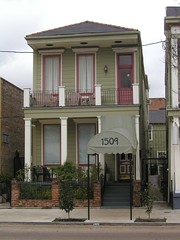
My hotel in the Garden District. I now know the St. Charles streetcar line well.
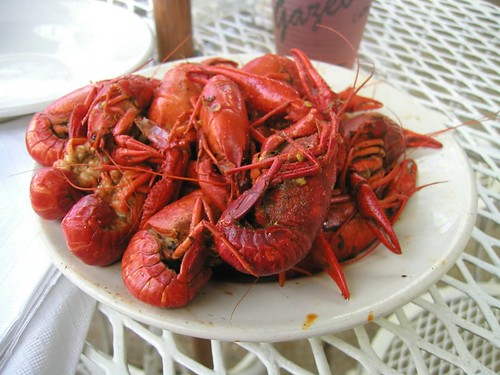
My staple food.
Training 2005
Tony O'Driscoll
"If content is king, context is the kingdom."
Often people need instructions, not instruction.
 Tom Stewart, editor of Harvard Business Review and author of Intellectual Capital, delivered an awesome presentation. Noting that the hotttest business books, Execution and Who Moved My Cheese? were about coping rather than coming up with something new, Tom called for a rekindling of management ideas.
Tom Stewart, editor of Harvard Business Review and author of Intellectual Capital, delivered an awesome presentation. Noting that the hotttest business books, Execution and Who Moved My Cheese? were about coping rather than coming up with something new, Tom called for a rekindling of management ideas.The overarching meta-challenge is SPEED. It's 24/7. Tom described how designing a power chip for a new cell phone once entailed weeks of talking with colleagues and sketching things out. Now the chip designer feeds the specs into a databank of all past chips, tweaks a new design, and orders up a prototype chip that will arrive by FedEx the following morning.
To keep up to speed, decisions must be made in real time. Workers on the front line must be able to think strategically. (More readers for HBR!) Old-style training is insufficient; companies want the staff to deal with this year's needs.
Three big pressures:
- The net, bringing buyers & sellers together. Things are fuzzy at the borders. Outsourcing leads to "who's who?"
- The China price. Sorry, Dell, there are cheaper alternatives.
- King Customer. Car buyers dictate the price they'll pay. Everywhere, customers are taking over the business.
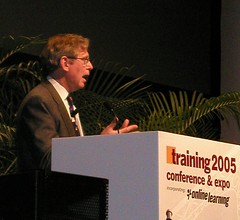
Here's a handy overview of Tom's model of intellectual capital based on three types of eating establishments: Chez Panisse, McDonald's, and Cheers.
- For Chez Panisse, a person is the defining factor: Alice Waters, its founder/chef. This is Human Capital.
- For McDonald's, the formulas for consistency, cleanliness, and services rule. This is Structural Capital.
- You go to Cheers because you have a relationship there; everyone knows your name. This is Relationship Capital.
For the past 100 years, the function of management has been to reduce uncertainty. Managers lived by forecasts borne of cuase & effect, linear thinking, and rationality. These times call for new models. (I'm going to have to decipher some scribbles to complete this part.) Tom identifies four levels of decision-making:
- What do we know of the environment? Snowden
- Break the unknown into knowable and unknowable
- If in chaos, the best thing to do is to act. Put a stake in the ground.
- If in complexity, follow your current direction.
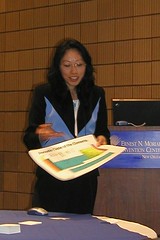 IBM's Jenny Chow presented the Roadmap for Learning to a small but enthusiastic group.
IBM's Jenny Chow presented the Roadmap for Learning to a small but enthusiastic group.Here's a handy way to think about learning. "Embedded" is equivalent to what I've been calling "Workflow Learning."
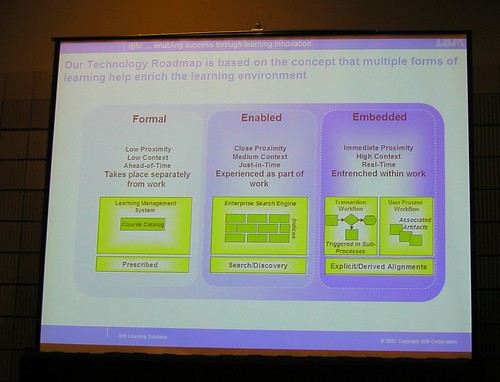
Instancy's Harvey Singh demonstrates workflow learning to Andy Snider in the Workflow Learning booth in the expo.

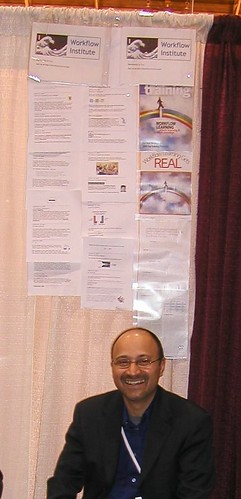
On to more important things. Here's the French Market Cafe:
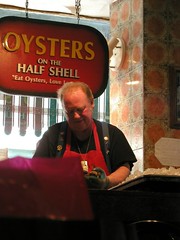
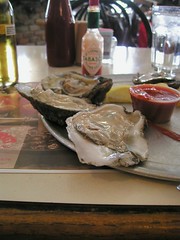
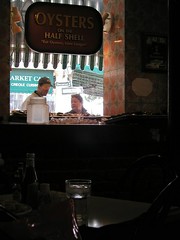
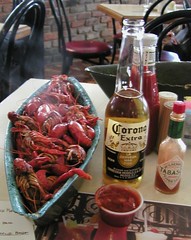
Eating crawdads at Felix's Oyster Bar with Tony O'Driscoll, Rebecca Strohmeyer, Astrid Mendosa, Saul Carliner, and Brenda Sugrue. Followed by a plateful of softshell crab. Yum.
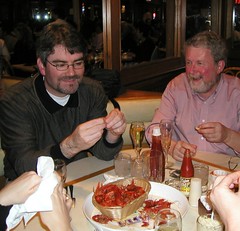

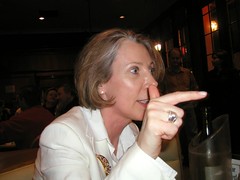
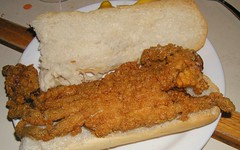

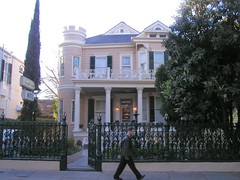









0 Comments:
Post a Comment
<< Home